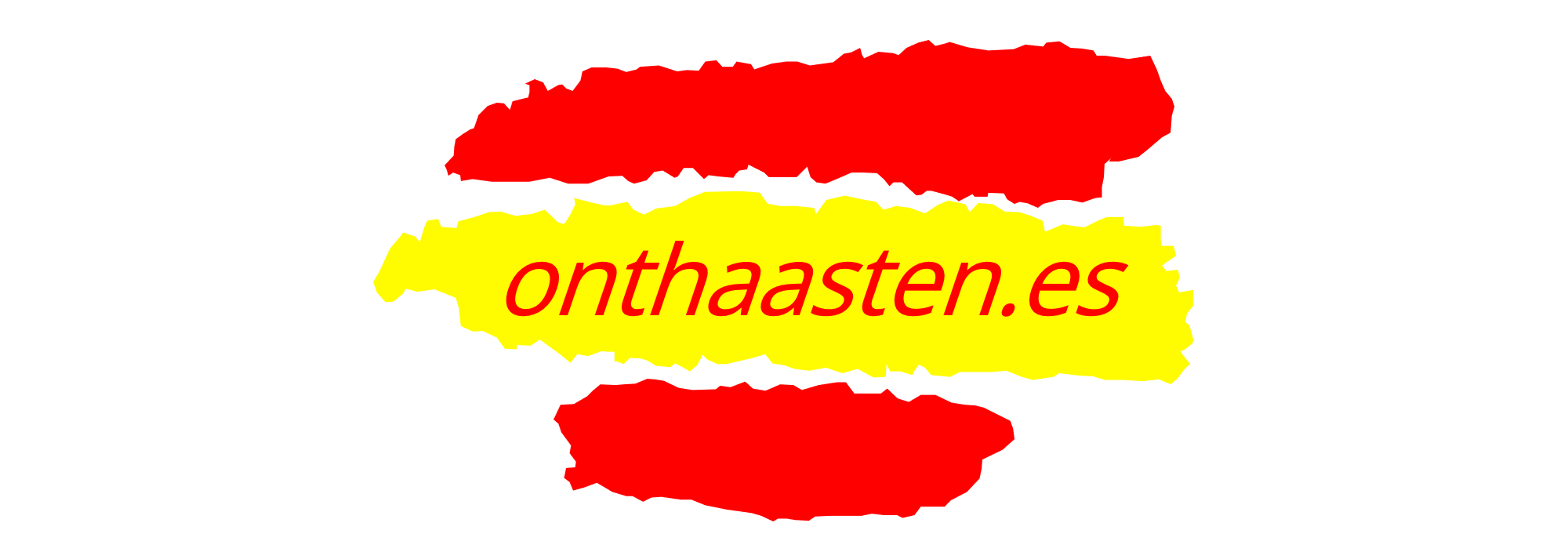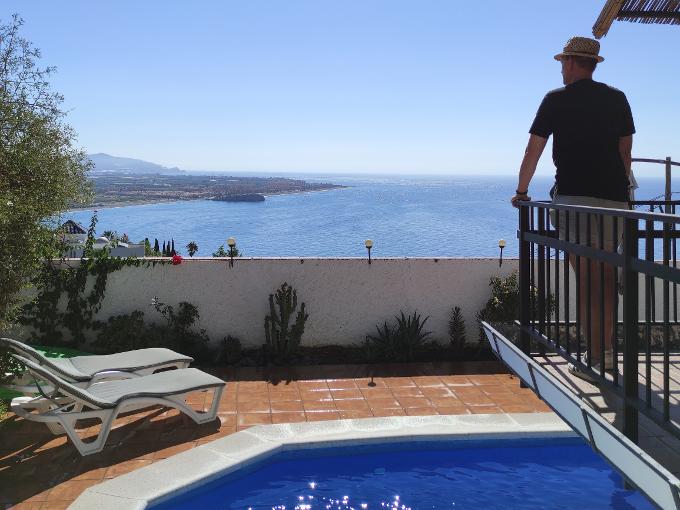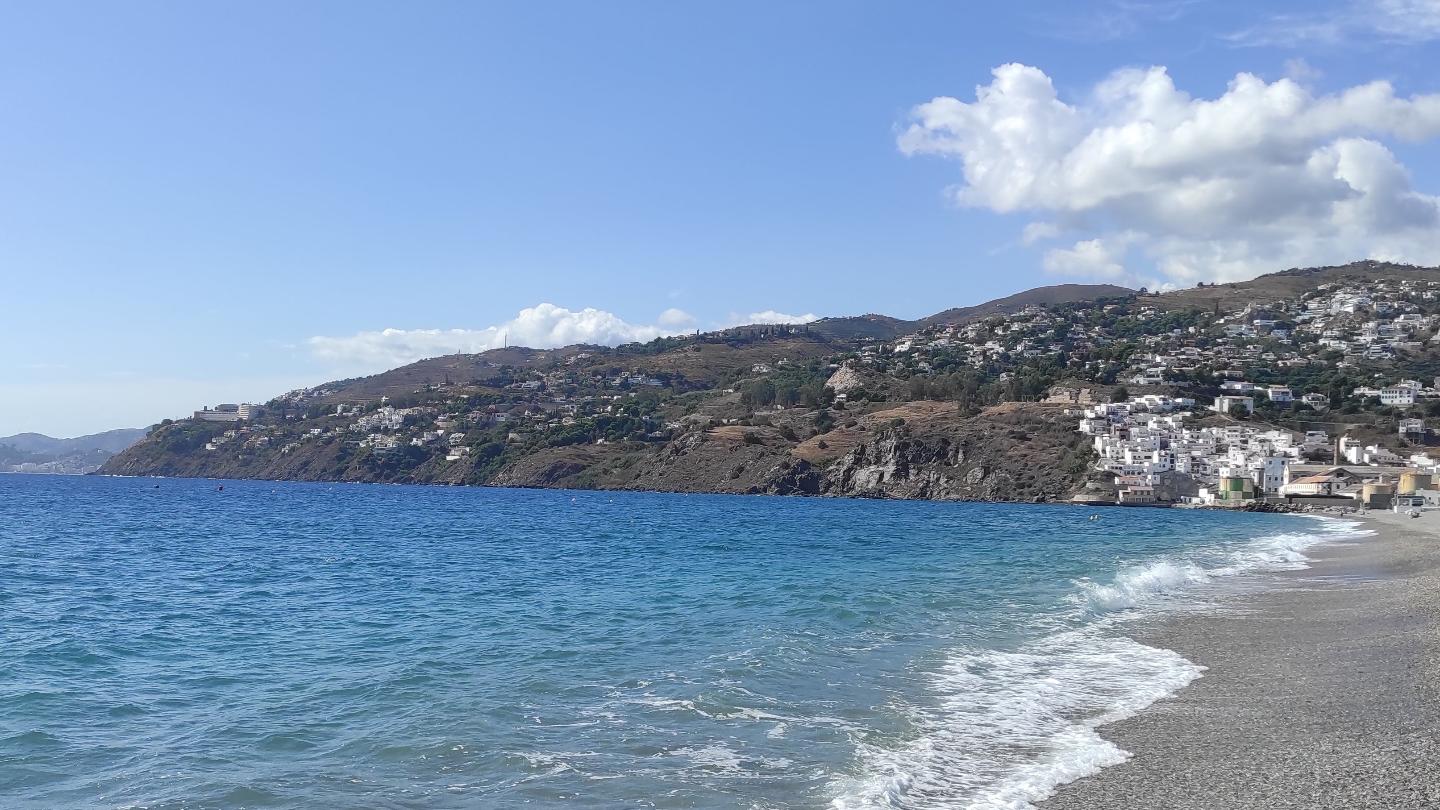
Andalusia blog
Pinos del Valle, 25th of September 2021, Reijer Staats
This Andalusia blog has made it possible for almost 2 years now to follow us building our life under the Andalusian sun. I am walking with my neighbour Teresa down Calle Ingenio in Salobreña on a warm summer evening in September. We are arriving at the end of the narrow street. On the left, just before the intersection with Calle Cristo, is a row of old houses. The houses consist of one floor only and a small attic under a pitched roof with terracotta roof tiles. The white plastered facades have double wooden front doors in the middle, and all have windows behind bars on either side. The chimneys on the houses are topped by terracotta tiles, to prevent rain from entering, giving he scene a Moorish feel. "When I was a child, all the houses in Salobreña looked like this," Teresa says. "And large families with six children or more were living in them. There were hardly any big houses, because you had to be rich for that. And at that time, there were hardly any rich people around."
Overlooking the bay of Salobreña from Villa Merise.
Salobreña in the 1940s
Sometimes, I am taking you back in time in this Andalusia blog. This street scene sketched is located at the bottom of the rock on which Salobreña is situated and should be placed in the mid-1940s. Most of the village streets were paved with pebble stones coming from the beach. Some of the patios, squares and the sidewalk in front of the water source were paved in Andalusian patterns. The name of Calle Ingenio immediately fascinates me. Ingenio means ingenuity which I associate with imagination and creativity.
A house characteristic of Salobreña in the 1940s.
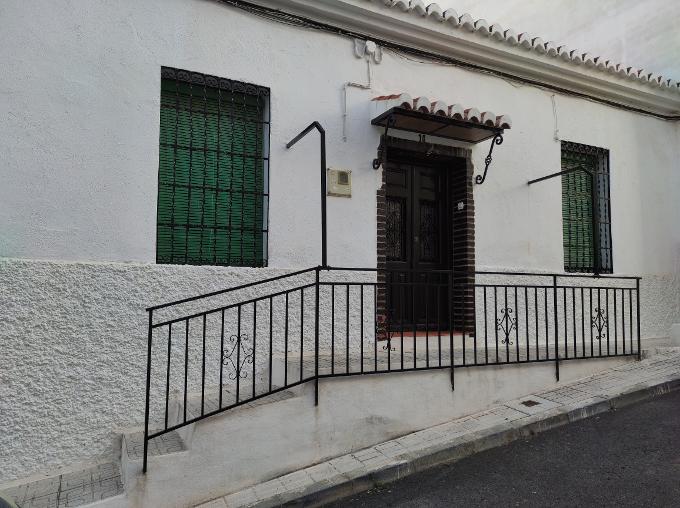
Teresa's aunt, with her seven children, lived in the first house in the row of three, and next to it was the back porch of her father Pepe's open-air cinema. The neighbours would call him the Sheriff, not only because he was wearing a pointy cowboy hat always, but also because he did as he pleased without exception. Teresa's family of origin, eventually with a total of ten children, lived diagonally across from the aunt and right next to them on the corner was her grandmother's house. Teresa's mother and grandmother were both called Teresa too: three generations of Teresa’s on the corner of Calle Cristo with Calle Ingenio!
To escape the crowded house, Teresa as a child regularly squeezed out to disappear in the finca style garden, where she selected one of the larger nispero or cherimoya trees to climb into, to spend her day reading on its branches in the shade. “Had I not climbed the tree,” Teresa tells me, “my mother would have caught me right away and would have called me inside directly!” But luckily she was not able to see Teresa in the leafy tree tops. A hairdressing salon was located on the other corner of the main road from Málaga to Almería, which at the time ran right through Salobreña. The word “Peluquería” was painted on the white facade in elegant letters.
Teresa waves to one of her nieces, who is sweeping the roof terrace of her house just around the corner, next-door to what used to be her grandmother's “corral”, where she kept her chickens for the eggs and a pig and rabbits for the meat. Teresa recalls memories of the “matanza del cerdo”, the slaughter of the pig, taking place every year in the winter months and she tells to have experienced it often up close as a child. We walk past the old pension with the former bus stop, well with drinking water and the Sheriff's business opposite. In his store he traded in fertilizer, bricks and building material and he had made several square meters available to local farmers to sell their potatoes, vegetables and fruit. Teresa’s uncle Antonio from the Lecrín Valley would offer his olive oil for sale in this corner too. Both the store and the old pension were located behind two huge ancient wooden doors.
Trucks drove up and down Calle Cristo continuously and buses, with the enchanting destination called “Gibraltar” written above their windshields, would pass by every now and then. The gate of the store had to be opened entirely once in a while, so that one of the buses could be safely parked inside during the night. Teresa mentioning this gives me an impression of the dimensions of the building. The bus driver and the passengers would of course, spend the night at the old pension opposite.
Teresa takes me by the hand and drags me into the pension where we take a trip back in time. The building is still filled with the original atmosphere of its past. From the porch to the left is the entrance to the dining room and to the right is a door to a chamber, about which Teresa tells me that it used to be reserved for the elderly in their final stages of life. As I am strolling through the ground-floor rooms and the patio, Teresa animatedly chats with the owner of the pension. She doesn't want to give rumour of the fact that we are working on a book with her memoirs, so she tells the lady that I am a Dutch “chico” who is doing historical research on Salobreña and who writes about it in his Andalusia blog.
A couple of guests of the pension are entering one of the communal bathrooms. The vintage refrigerator with the "San Miguel" beer brand in the kitchen next-doors and the Andalusian-decorated facades of the rooms around the courtyard are captivating me. Teresa tells me that the guests of the pension used to tie their mules to the facades in previous times. The patio is now occupied by potted plants and parasols in vintage colours. It only takes little imagination to place this decor in the 1940s.
Some pictures of the pension.
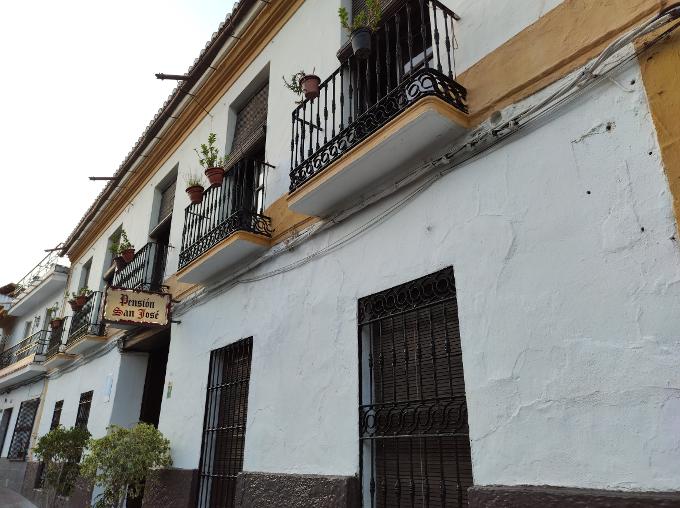
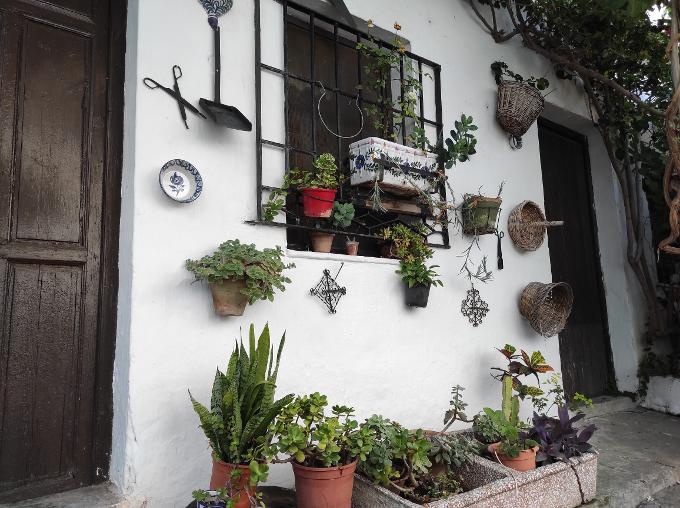
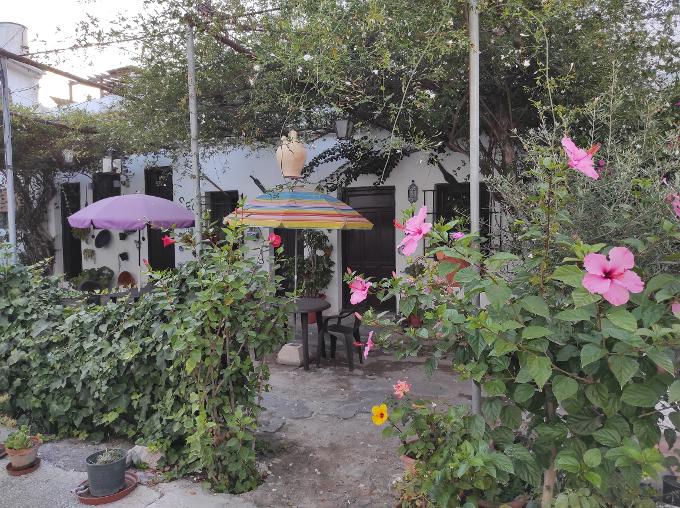
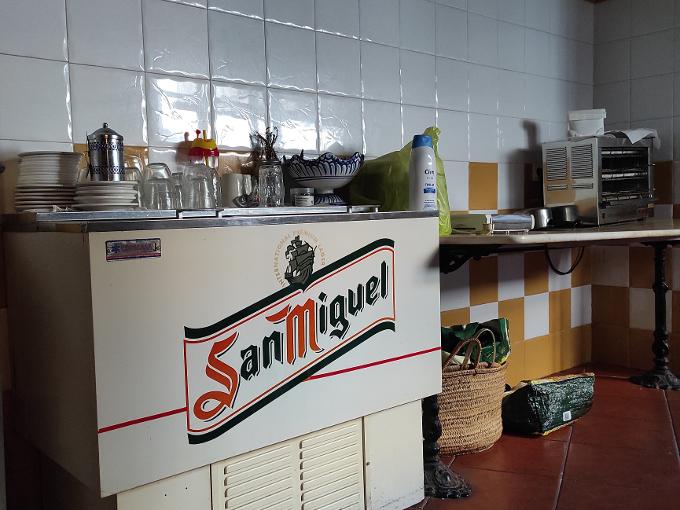
Teresa recalls how the peasants and their mules made their way from the sugar cane plantations to the main street and the pension, passing her father's small bar with a gate next to it, which served as the main entrance to the open-air cinema. It is hard to imagine now, since there are four large blocks of apartments, but at the time being there were no buildings here and the “campo” with the sugar cane was located directly behind the cinema. On every corner of the street, which is now getting increasingly busy, Teresa is approached by family, friends or neighbours, whose mouths fall open before uttering wide-eyed: “Teresa??” Apparently I am out with a famous fellow villager.
Another narrow street runs up the rock, just behind the former bus stop, well and store. While pointing to four small dilapidated houses, Teresa says: “This is where the gypsy quarter used to be.” From this part of the village, this was the way up to the church, which stands at the very top of the rock, slightly below the Moorish castle. “It used to be a dirty walk up. Whether it was for a wedding, a farewell service, a baptism or a communion. Before you had reached the church in your festive clothes, you would already be dirty and sweaty!”
The gypsy quarter of the street was inhabited by four brothers, living side by side. One of them was the butcher, the only one in the village. Another, named Marino, was a talented metal worker and flamenco singer. Every time when the Sheriff would shout “Marííííínoooooo” in the middle of a hot sticky summer night, then the troubadour exactly knew what was expected of him and set down his wooden chair by the well, picked up his guitar and filled the dark streets with his magical singing. One of the gypsy family's sisters was a nurse and the only one in Salobreña who could administer vaccines. She had a very scary appearance, wearing a habit and a white hood on her head. Every single one of the villagers was afraid of her and I immediately start to image this scene also.
José Martín Recuerda Foundation.
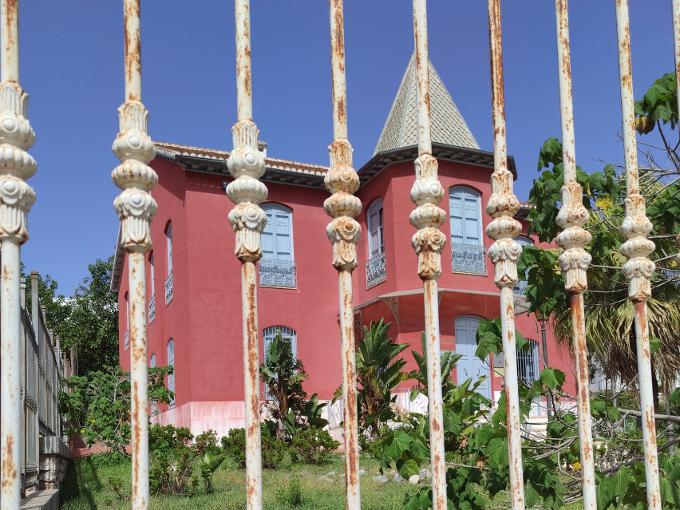
My neighbour and I are now driving back home. We are passing a red-painted castle, which used to be in the middle of the campo and housed the administrator of the sugar factories. Now the building houses the “José Martín Recuerda” Foundation. While staying at the pension, writer José Martín Recuerda, wrote the play “Como las cañas secas del camino” (Like the dry reed along the road), that would later be made into a film. The play told of teacher Julia from Salobreña, who, in response to the suffocating environment in which she lived, fell into a love affair with one of her pupils, and with her maid Paquita as her accomplice. This relationship only added to the drama of her life, as Julia would eventually be stoned to death.
Right next to the castle is Calle Pepe Garcia Cervilla, named after Teresa's father. Now that we have passed this street, I can stop narrating the setting of a major part of Teresa's memoirs in this Andalusia blog.
La Caleta de Salobreña
It is a wonderful afternoon’s walk from Villa Merise through Costa Aguilera Mar towards the canteen style pub of Gloria Michel, which always guarantees inspiration for a new Andalusia blog. After crossing the busy road and leaving our quirky neighbourhood, we follow a narrow mountainous path first while enjoying vistas of the Mediterranean to our right. A man picks the pods from the branches of a huge carob tree with a rake. Two others pick up the pods from the ground. When ground and dried, they will be used as a binder, for making tea or as an alternative to cocoa.
Just after passing a mysterious ecological community house, next to which a donkey grazes against the background of the sea, we turn right onto the steep path down towards Playa de Caletón. There are some people snorkelling between the rocks of the secluded bay and some shiny bodies are sunbathing on their towels on the beach. I turn left into the paved coastal path with podenco Mélo on the leash, followed by Johan and Claudia. The winding path along the water leads us to our favourite terrace in the raw harbour district of La Caleta, the bay of Salobreña.
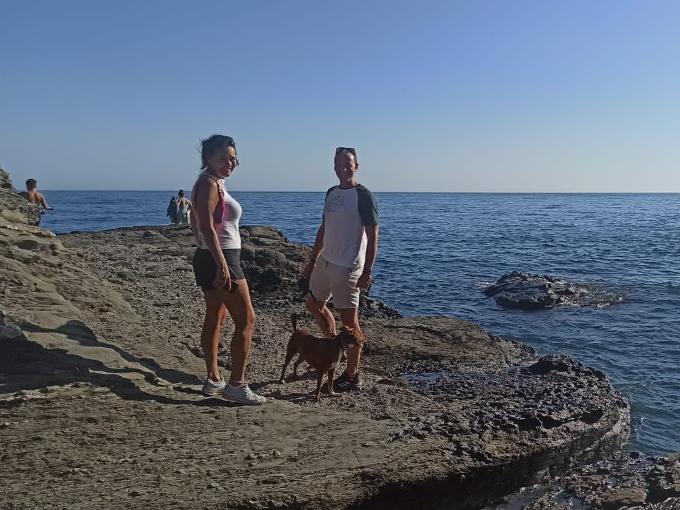
This time Claudia is joining us, a positive, open and enthusiastic person with whom I have become friends since May 26th while ascending the summit of the Mulhacén, the highest mountain of the Iberian Peninsula. Until now Johan had only briefly met this writer, organizer of hiking weeks and retreats in Andalusia and disciple of la pura vida. While she is trying to capture the beautiful surroundings with her camera, Claudia enviably tells us about her plans to walk the Camino to Santiago de Compostela from a French border town.
A visit to Gloria Michel guarantees entertainment. We experienced a cinematic afternoon at this venue before. Not only thanks to the characteristic people who hang out and walk by. But also because of the background with the white-plastered casas of this fishing district, the steep streets flanked with bright blue painted railings and the old sugar and rum factory. We arrive at around 6 pm. It’s extremely quiet since it is too early for Spanish standards. The bar’s staff are the only ones occupying a table, and they are having a meal prior to the start of their evening shift. We decide to sit down at the table opposite them.
Johan, Claudia and Reijer and the lady with black curls on Crocs, spotted again.
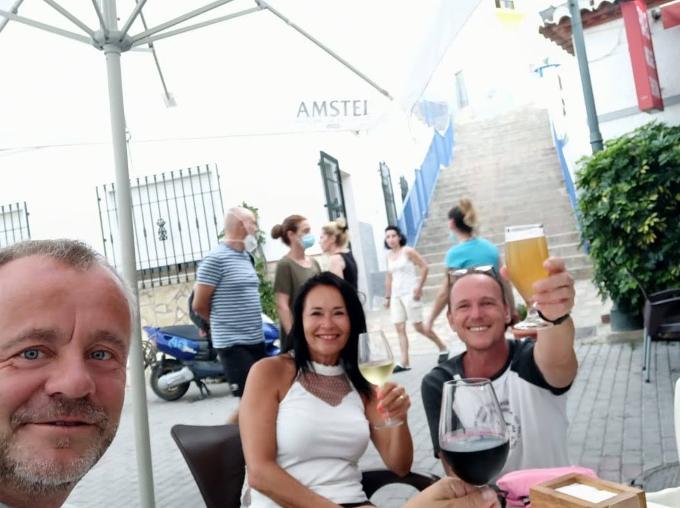
The staff, consisting of three ladies and one hombre, are making an enthusiastic first impression. They are lighting one cigarette after the other. The youngest señorita, who we have known from previous visits, serves our first glass of wine. The señorita has a nerdy look with oversized glasses and braces, but in addition she is also decorated with a huge heart-shaped tattoo on the right arm. Today we notice her face to be fiery red, but we decide that the cause of this cannot be that she’s on her last legs at the end her shift. We also notice a señora with black curls, a grumpy expression and Crocs sandals, who is taking a peak at the terrace every now and then. This lady seems to live up the street slightly behind the bar. It's not really clear to us what she is coming down for every time, but Johan and Claudia have already started fantasizing about her reasons.
One of the señoras, who sat at the staff table just now, leaves the terrace. She re-joins the bunch some five minutes later and hands over a package from Amazon to the red-faced señorita. The reason behind the cheerfulness, now becomes clear to us. Apparently, today is the friendly señorita’s birthday! A tiny purple shirt is unwrapped and is enthusiastically held in front of the señorita’s upper body. Johan and Claudia are sure now: she must have received a voucher for a facial peeling earlier today, and she must have immediately redeemed it. The tiny purple shirt certainly stands out against the glowing red face with the childish smile. One of the señoras then disappears into the kitchen, the only guy takes a seat on a bar stool in front of the slot machine and the señora who is slightly older, who had her hair bleached and who is decorated with colourful tattoos, puts on her apron and goes onto the terrace with a wet cloth cleaning tables. She must be the señorita's mother, or so we think. The terrace is now filling up, it is around seven.
The lady with the black curls on Crocs still comes out every ten minutes to check out the terrace. Johan and Claudia have a little too much imagination. For this Andalusia blog they are now making up the fictional situation of a flash mob, in which they hilariously describe the next appearance of this special character on the terrace in a spicy dress and high heels. It’s also a back and forth of suppliers delivering their goods to Gloria Michel's kitchen door. Just as we're ready to order our second glass of wine, the entire exuberant staff shoots from the bar towards two Vespas parked alongside the terrace. After a spirited discussion about who takes place behind the steering wheel and who is seated on the passenger seat, the foursome disappears into the street with their pipes popping, only to return five minutes later with bags full of bread.
Claudia, who, despite the fact that the sun has not yet set, is already being infested by hungry mosquitoes, asks for repelente to the señorita. But she replies not to have anti-mosquito oil available at Gloria Michel, although confirming that there are indeed muchos musquitos. Fortunately, geranium-filled terracotta flower pots adorn the factory wall above my head, a minute later resulting in Claudia rubbing her arms and legs with bruised geranium leaves like a herbal lady. This turns out to be not enough to scare off the hungry insects. A few slices of lemon are ordered to do the job properly and Claudia, with her fresh and sweet-sour scented skin, now manages to limit the number of itchy bumps somewhat. People are crossing the terrace in a continuous stream: fishermen with fishing rods, snorkelers with harpoons, boys in swimming trunks only, couples with a baby, colleagues dressed in matching company clothes and small groups of friends. It's as if everyone wants to stroll along the coastal path towards Playa de Caletón after work. This spectacle is Spanish life which we love to gaze at for hours to slow down completely.
A handsome and muscular Spaniard in worker pants perches himself on a bar stool at the wine barrel right at the entrance of Gloria Michel. He orders a cerveza and has a remarkable amount of appeal on passers-by. He casually strikes up a conversation with an English-looking young lady with a blond wavy ABBA hairdo, colourfully dressed in Custo Barcelona, who had just been left alone at the bar by an elderly man, clearly her other half. Claudia and Johan go wild, while enjoying a third glass of wine, about the affair that is developing opposite of us. But in the end, the previously enthusiastic and cheerful lady leaves the stage looking disappointed when her older lover arrives again to pick her up. Surprised, we then watch the lady on Crocs sternly directing the handsome Spaniard home. How do they relate to each other? To be continued, I'd say. With the unlit path back to Villa Merise still to go, we also decide to leave the terrace at nightfall under a clear sky with many stars.
On our way back to Villa Merise.
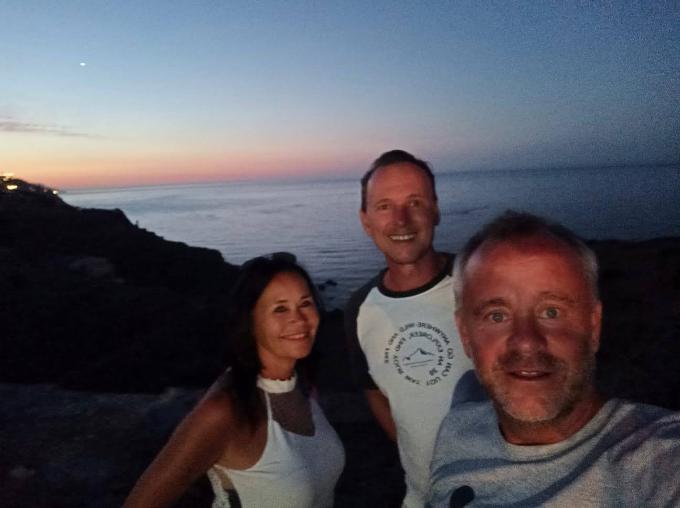
Almería, Granada, Málaga, Sevilla, Córdoba, Jaén…
We pass through much of Andalusia´s incredible scenery and travel for hundreds of kilometres through six of its eight provinces. After a week´s visit of my mum, we drop her off at Almería Airport and tour the “Ruta del Califato” between the cities of Córdoba and Granada, once, during the Middle Ages, one of Europe´s busiest trade routes. With Johan at the steering wheel, I thoroughly enjoy the beautiful rolling hills of gold, the endless olive groves, the rugged mountains, green riverbanks and the white hilltop villages, invariably topped by a Moorish castle at its highest point. This is definitely the territory to slow down in a French classic on wheels!
The latest addition to our car portfolio: a 1983 Citroën Dyane 6
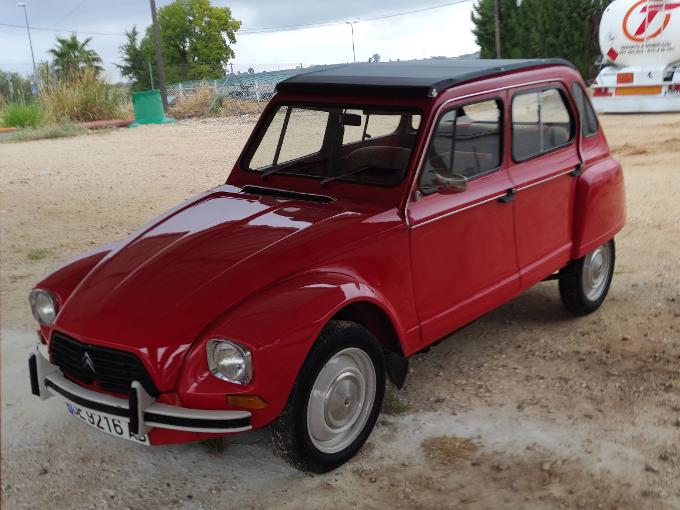
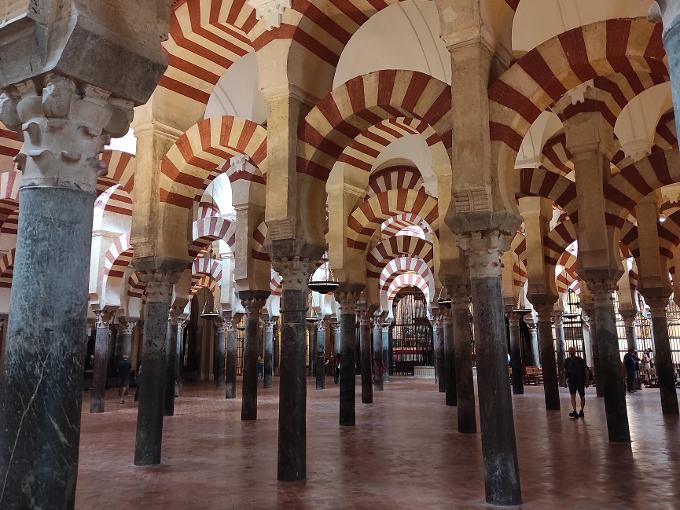
Along our way we are having a stopover in Córdoba for a city walk, lunch and a visit to the impressively unique Mezquita Cathedral. Finally, in the province of Seville, we reach the final destination of our trip. We have arranged to meet Alberto, the owner of a busy local petrol station in a Sevillian provincial town, who sells us his restored 1983 Citroën Dyane 6. Johan jokes about the life of the owner of the petrol station, with its adjacent cantina, which would be able to provide an enormous amount of material for a real life soap or for our next Andalusia blog. We might stick around a little longer next time when we go to pick up our new acquisition. A long-cherished wish to rent out French classics will soon be fulfilled, and you will soon be able to join us for an old-timer tour through Andalusia´s wine routes, along the coast and through the hinterland. We are very pleased to be able to share our Dyane 6 and Renault 4 with our guests to slow down too during a "Tour de Granada".
Home grown mangoes.
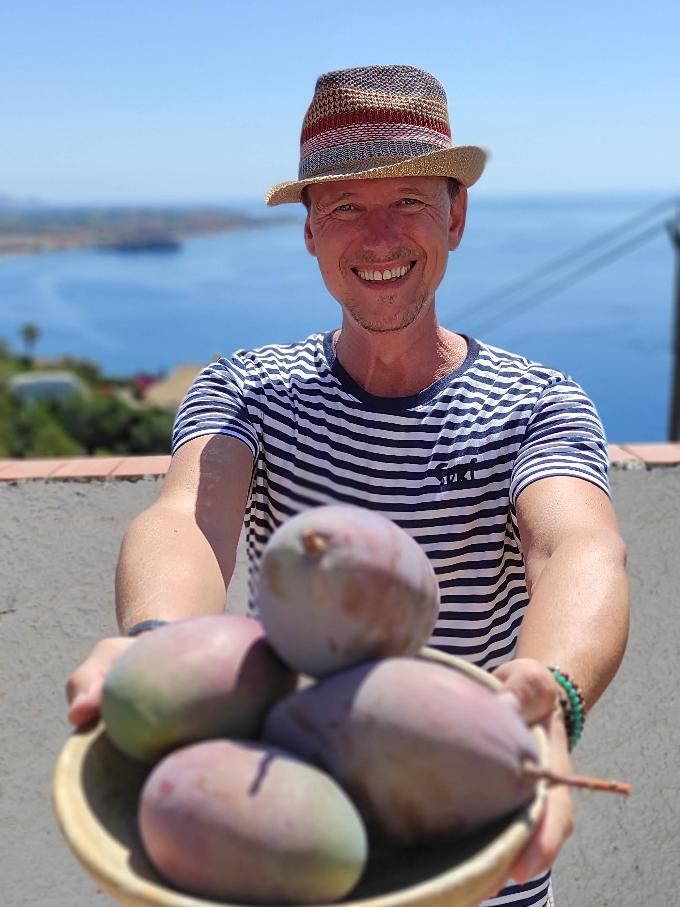
From Salobreña to Pinos
Our stay in Salobreña has come to an end and Villa Merise has been rented out for a few weeks. We´re back home in Pinos del Valle. I am clumsily trying to open the front door with a bag full of mangoes in my hands and podenco Mèlo and dalmatian Joey on a dog leash. The dogs start to bark impatiently and our cheerful neighbour Salvador, who should of course make an appearance in this Andalusia blog, curiously walks by to have a chat. His summer outfit of shorts, t-shirt and straw hat has been exchanged for his eternal overalls, but still zipped open to his navel.
Salvador starts making barking noises back to Joey, yelling "Que pasa!?" Me, answering: "Querría comer ahora!" Joey knows there's food waiting for him upstairs. “Si, claro, claro, claro”, Salvador responds . Neighbour Angéla, Salvador's wife, also joins in our conversation on the street. She is holding a piece of bread in her hand, gestures Mèlo to jump up on her and then rewards the little podenco with the goodies. “That's exactly the behaviour I want to unlearn her,” I think to myself. Joey is also rewarded for barking and almost bites off Angéla's fingers.
Salvador then works towards introducing another one of his daily Spanish sayings to me: “Un coche necesita gasolina. Nosotros necesitamos comida y bebida." (A car needs petrol and we need food and drink). I reply saying that he’s right with that: "si, claro", and proudly show my neighbours the bag full of mangoes from our garden in Salobreña. “Aaaaah!”, Salvador exclaims, with the proud face of a farmer who owns a plot of land with fruit trees himself. He continues in a cynical tone: “La gente de la capital desprecia a la gente de los pueblos y piensan que son más inteligentes.” I am not directly getting it and it takes me a while to understand exactly what this sentence means. Angéla helps me pronounce the word “desprecia” in the meantime. But it's not until the word "capital" is replaced by "Catalunya" and the word "pueblos" by "Andalucía," that I understand what he meant to say that city-people look down on villagers and think they are much more intelligent. I add that Northern Europeans look down on Southern Europe also and finally joke, with the bag full of mangoes in the air, that Northern Europeans, like us, who have relocated to sunny Andalusia know better and are mucho más intelligente.
Hasta luego from the Valley of Happiness.
Johan & Reijer
